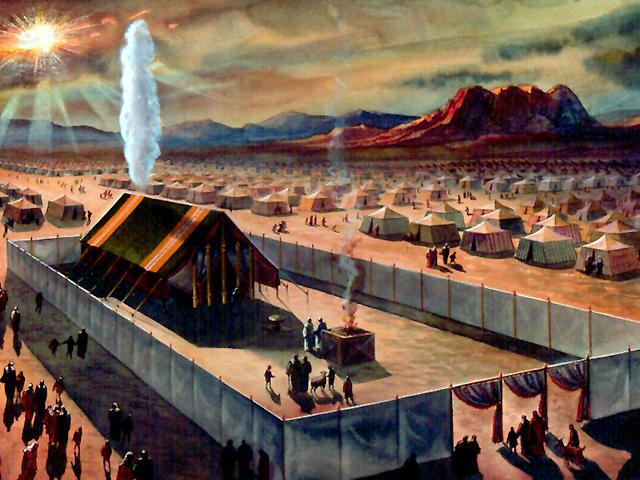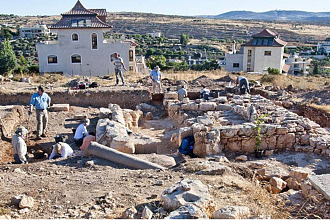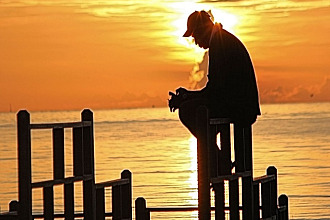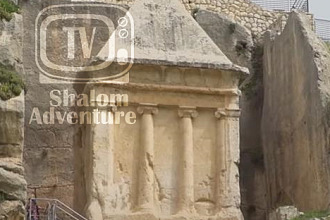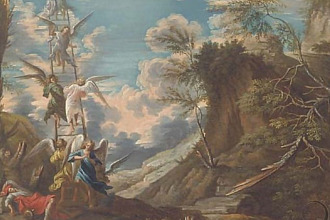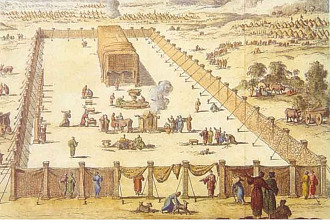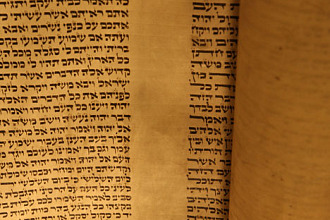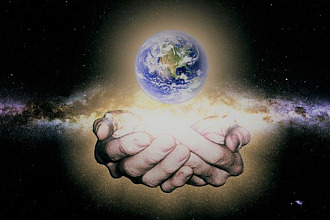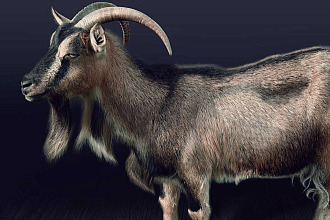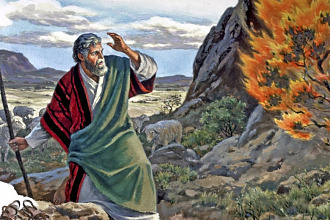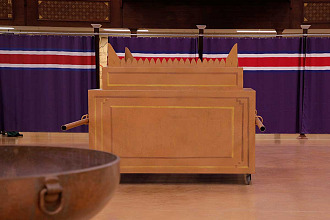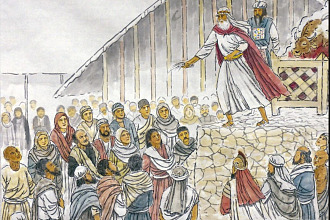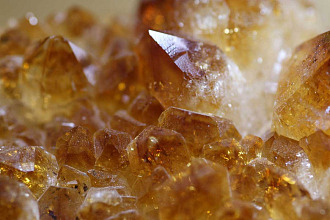Yom Kippur is described in Leviticus 16. This entire chapter describes how the ordinance of the Day of Atonement was to be carried out in the sanctuary and later in the temple of Jerusalem. That's why the sanctuary and its services are very important for the people of Israel. God himself commanded Moses to build a sanctuary. "Let them make Me a sanctuary; that I may dwell among them" (Exodus 25:8). The services of Rosh Hashanah and Yom Kippur were completely dependent on the sanctuary. That's why we have to be aware that today; nobody, even the Jewish people, celebrates the feasts as they are described in the Bible. Each one has his own traditions of what is to be done today in the absence of the sanctuary and the priesthood established by God in the Torah.
What is the significance of Yom Kippur for us, today? To understand this point, we have to remember how the sanctuary was built and how it functioned.
The Court
The building was divided into two apartments by a rich and beautiful curtain, and a similar veil closed the entrance of the first apartment. The sacred tent was enclosed in an open space called the court, which was surrounded by hangings, or screens, of fine linen, suspended from pillars of brass. In the court, and nearest the entrance, stood the brazen altar of burnt offering. Upon this altar were consumed all the sacrifices made by fire unto the Lord, and its horns were sprinkled with the atoning blood. Between the altar and the door of the tabernacle was the laver. At the laver, the priests were to wash their hands and their feet before they went into the sacred apartments or approached the altar to offer a burnt offering unto the Lord.
The First Chamber: Holy Place
The first chamber of the tabernacle or Holy Place held the table of showbread, the candlestick or lampstand, and the altar of incense. The table of showbread stood on the north. On the south, was the seven-branched candlestick (menorah) with its seven lamps. Just before the veil that separated the holy place from the most holy place and the immediate presence of God, stood the golden altar of incense. Upon this altar the priest was to burn incense every morning and evening; its horns were touched with the blood of the sin offering, and it was sprinkled with blood upon the great Yom Kippur.
The Second Chamber: Holy of Holies
Beyond the First Chamber and the inner veil was the Holy of Holies, where the symbolic service of atonement and intercession were centered. The Second Chamber formed the connecting link between heaven and earth. In this chamber was the Aron Hakodesh: a chest of acacia wood overlaid inside and outside with gold, having a crown of gold around the top. It was made as a depository for the tables of stone, upon which God Himself had inscribed the Ten Commandments.
The cover of the sacred chest was called the Mercy Seat (kaporet same root as Kippur). This was wrought of one solid piece of gold, and was surmounted by golden cherubim, one standing on each end. One wing of each angel was stretched forth on high, while the other was folded over the body (see Ezekiel 1:11), in token of reverence and humility. The position of the cherubim, with their faces turned toward each other, and looking reverently downward toward the ark, represented the reverence with which the heavenly host regard the law of God and their interest in the plan of redemption.
The Cohanim
By divine direction, the tribe of Levi was set apart for the service of the sanctuary. The priesthood, however, was restricted to the family of Aaron. Aaron and his sons alone were permitted to minister before the Lord; the rest of the tribe were entrusted with the charge of the tabernacle and its furniture. The rest of the tribe were to attend upon the priests in their ministration, but they were not to sacrifice, to burn incense, or to see the holy things till they were covered. No mortal eye but that of the high priest was to look upon the inner apartment of the sanctuary. Only once a year, on Yom Kippur, could the priest enter there, after the most careful and solemn preparation. With trembling, he went in before God, and the people in reverent silence awaited his return, their hearts uplifted in earnest prayer for the divine blessing. Before the mercy seat the high priest made the atonement for Israel, and in the cloud of glory, God met with him.
Sanctuary Services
The daily service, consisted of the morning and evening burnt offering, the offering of sweet incense on the golden altar, and the special offerings for individual sins. There were also offerings for Sabbaths, new moons, and special feasts.
Every morning and evening, a lamb of a year old was burned upon the altar, with its appropriate meat offering, thus symbolizing the daily consecration of the nation to God and their constant dependence upon the atoning blood of Mashiach.
The incense, ascending with the prayers of Israel, represents the merits and intercession of Mashiach, His perfect righteousness, which through faith is imputed to His people and which can alone make the worship of sinful beings acceptable to God.
By blood and by incense, God was to be approached—symbols pointing to the great Mediator, through whom sinners may approach God and through whom alone mercy and salvation can be granted to the repentant, believing soul.
As the priests, morning and evening, entered the holy place at the time of incense, the daily sacrifice was ready to be offered upon the altar in the court outside. This was a time of intense interest to the worshipers who assembled at the tabernacle. Before entering into the presence of God through the ministration of the Kohen, they were to engage in earnest searching of heart and confession of sin. They united in silent prayer, with their faces toward the holy place. Thus their petitions ascended with the cloud of incense, while faith laid hold upon the merits of the promised Saviour prefigured by the atoning sacrifice. The hours appointed for the morning and the evening sacrifice were regarded as sacred, and they came to be observed as the set time for worship throughout the Jewish nation. And when in later times the Jews were scattered as captives in distant lands, they still at the appointed hour turned their faces toward Jerusalem and offered up their petitions to the God of Israel.
In this custom, believers have an example for morning and evening prayer. While God condemns a mere round of ceremonies without the spirit of worship, He looks with great pleasure upon those who love Him, bowing morning and evening to seek pardon for sins committed and to present their requests for needed blessings.
Yom Kippur
God commanded that an atonement be made for each of the sacred chambers, as for the altar, to "cleanse it, and hallow it from the uncleanness of the children of Israel" (Leviticus 16:19).
Once a year, on the great Yom Kippur, the Kohen entered the Most Holy Place for the cleansing of the sanctuary. The work performed there completed the yearly round of ministration.
On Yom Kippur, two kids of the goats were brought to the door of the tabernacle, and lots were cast upon them, "one lot for the Lord, and the other lot for the scapegoat." The goat upon which the first lot fell was to be slain as a sin offering for the people. And the priest was to bring his blood within the veil and sprinkle it upon the mercy seat. "In this way he will make atonement for the Most Holy Place because of the uncleanness and rebellion of the Israelites, whatever their sins have been. He is to do the same for the Tent of Meeting, which is among them in the midst of their uncleanness" (Leviticus 16:16). This cleansing represented the inward cleansing that God is doing in our hearts.
For more information on the Temple, go to Moses the Temple Builder.
For more information on Yom Kippur, read the chapter, The Ultimate Yom Kippur, in Jewish Discoveries.

